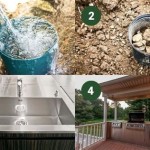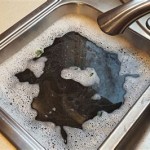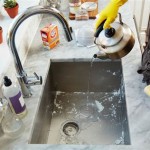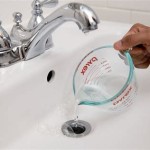Kitchen Sink Faucet: The Elegance and Efficiency of the One-Hole Design
The kitchen sink faucet is a crucial component of any functional kitchen space. Beyond its basic function of providing water, the faucet significantly influences the overall aesthetic and convenience of the kitchen. Among the various faucet configurations available, the one-hole kitchen sink faucet has steadily gained popularity due to its sleek design, ease of installation, and efficient use of counter space. This article delves into the characteristics, benefits, installation considerations, and maintenance of the one-hole kitchen sink faucet.
Aesthetic Appeal and Space Optimization
One of the primary advantages of a one-hole kitchen sink faucet lies in its minimalist design. Unlike traditional faucets that require multiple holes for the spout and separate handles for hot and cold water, a one-hole faucet consolidates these elements into a single, streamlined unit. This design creates a cleaner, less cluttered look, which complements modern kitchen styles. The reduced visual complexity can make a smaller kitchen feel more spacious and airy, as it minimizes the number of fixtures competing for attention on the countertop. Furthermore, the single-hole design is easily integrated with a variety of sink materials, including stainless steel, granite, and composite materials, providing flexibility in design choices.
The condensed footprint of a one-hole faucet also contributes to its space-saving benefits. With fewer components to accommodate, less countertop space is required, leaving more room for food preparation and other kitchen tasks. This is particularly advantageous in kitchens with limited counter space, where maximizing usable area is paramount. The compact design also makes it easier to clean around the faucet, as there are fewer crevices and corners where dirt and grime can accumulate.
Beyond the practical aspects, the aesthetic versatility of one-hole faucets is a significant draw for homeowners. These faucets are available in a wide range of styles, from sleek and modern designs to more traditional and ornate options. Finishes such as chrome, brushed nickel, matte black, and oil-rubbed bronze allow for seamless integration with existing kitchen hardware and décor. The ability to customize the faucet's appearance ensures that it can serve as both a functional fixture and a stylish accent in the kitchen.
Installation Considerations and Practical Advantages
The installation process for a one-hole kitchen sink faucet is generally simpler than that of multi-hole faucets. This simplicity stems from the reduced number of connections required. The faucet typically connects to the water supply lines via flexible hoses, which simplifies the process of attaching the faucet to the existing plumbing. This ease of installation can translate to cost savings if a homeowner chooses to install the faucet themselves, avoiding the expense of hiring a professional plumber.
However, it is important to note that certain factors should be considered before undertaking a DIY installation. First, the existing sink must be compatible with a one-hole faucet. If the sink currently has multiple holes, a deck plate or escutcheon may be required to cover the unused holes and provide a stable base for the new faucet. Second, the water supply lines must be in good condition and accessible. Any signs of corrosion or leaks should be addressed before installing the new faucet to prevent future problems. Third, it is essential to follow the manufacturer's instructions carefully to ensure a proper and leak-free installation.
In terms of practical advantages, one-hole faucets often incorporate user-friendly features such as pull-down or pull-out sprayers. These sprayers provide increased flexibility and control over the water stream, making it easier to rinse dishes, clean the sink, and fill large pots. The integrated sprayer design eliminates the need for a separate side sprayer, further contributing to the clean and uncluttered look of the sink area. The single handle control also allows for easy adjustment of water temperature and flow rate with just one hand, which can be particularly convenient when multitasking in the kitchen.
Maintenance and Longevity
Proper maintenance is crucial for ensuring the longevity and optimal performance of a one-hole kitchen sink faucet. Regular cleaning is essential to prevent the buildup of mineral deposits and soap scum, which can affect the faucet's appearance and functionality. A mild soap and water solution is typically sufficient for cleaning the faucet's exterior. Abrasive cleaners should be avoided, as they can scratch or damage the finish.
The internal components of the faucet, such as the cartridge or valve, may also require periodic maintenance. Over time, mineral deposits can accumulate within these components, causing leaks or reduced water flow. In some cases, the cartridge or valve may need to be replaced. The frequency of this maintenance depends on the water quality in the area. Homes with hard water are more likely to experience mineral buildup and may require more frequent maintenance.
Regularly inspecting the faucet for leaks is also important. Even small leaks can waste water and lead to water damage over time. If a leak is detected, it should be addressed promptly. Often, a simple tightening of the connections or replacement of a worn-out O-ring can resolve the issue. However, more complex repairs may require the assistance of a professional plumber. By following a regular maintenance schedule and addressing any issues promptly, homeowners can ensure that their one-hole kitchen sink faucet continues to provide reliable performance for many years.
Furthermore, the choice of faucet material and construction also plays a significant role in its longevity. Faucets made from solid brass or stainless steel are generally more durable and resistant to corrosion than those made from cheaper materials. Investing in a high-quality faucet from a reputable brand can often result in a longer lifespan and reduced maintenance costs over time.
The type of valve or cartridge used in the faucet is another factor to consider. Ceramic disc valves are known for their durability and resistance to wear and tear, making them a popular choice for high-quality faucets. These valves provide a smooth and precise control over water flow and temperature, and they are less prone to leaks than other types of valves. Choosing a faucet with a ceramic disc valve can contribute to its overall longevity and performance.

Flg Single Handle Kitchen Faucet With Pull Down Sprayer 1 Hole Sink Brass Taps In Matte Black Cc 0050 Mb The Home

Flg Single Handle Kitchen Faucet With Pull Down Sprayer 1 Hole Sink Brass Taps In Matte Black Cc 0050 Mb The Home

Kitchen Faucet Stainless Steel 360 Degree Swivel Single Handle One Hole Sink

Black Pull Down Kitchen Sink Faucet Single Handle One Hole Gooseneck Brass Adjustable

Kitchen Sink Faucet Single Handle One Hole W Pull Down Sprayer Chrome

Inclake Kitchen Faucet With Pull Out Sprayer Modern Stainless Steel Single Handle Down Sink Deck Plate High Arc Swivel

How To Install A Single Hole Kitchen Faucet 2024 Youtube

Flg Touchless Kitchen Faucet With Pull Out Sprayer One Handle Sink 1 Hole S Hand Free Taps Brushed Nickel Cc 0016 Bn

Kitchen Faucet Stainless Steel 360 Degree Swivel Single Handle One Hole Sink Made In China Com

Stainless Sink Kitchen Faucet Single Handle Modern One Hole Bar In Brushed Nickel From Lordear







